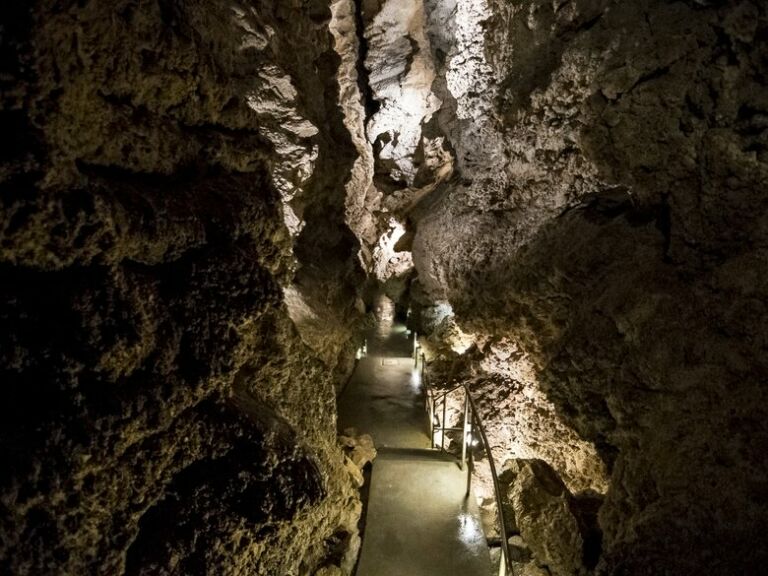Liberty Bridge in Budapest: unique, green and beautiful
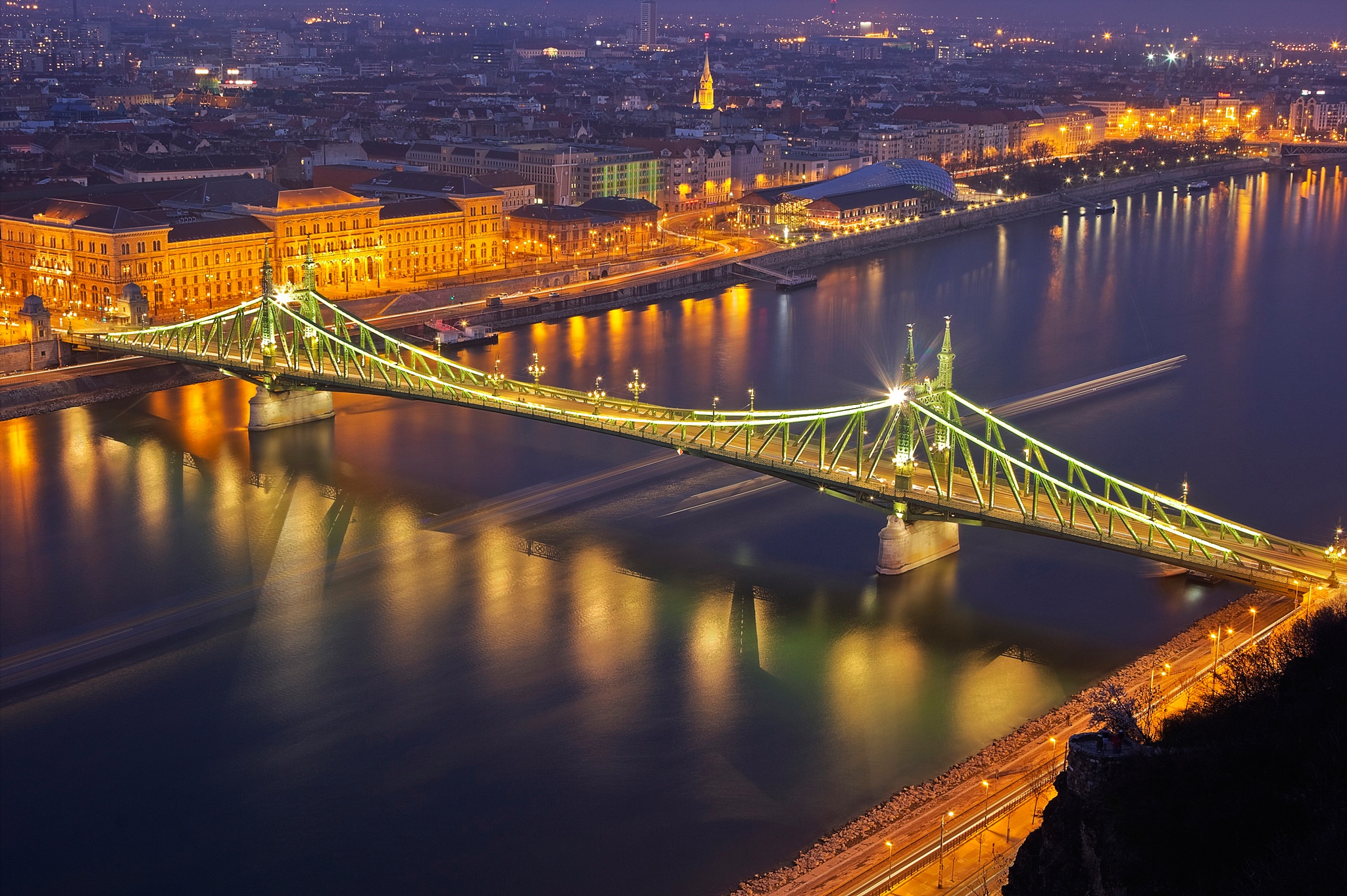
Liberty Bridge in Budapest: unique, green and beautiful
For some of us, beauty isn’t found in the obvious places.
Sometimes, when visiting a famous museum or a famous city renowned for its architecture, it’s the memory of the lesser-known statue or the more obscure building that stays with you. When it comes to the bridges of Budapest, I feel something similar with the Liberty Bridge, or Szabadság híd as it is known here. Yes, it’s true that there are bridges in this city that are a lot more well-known around the world. There are those that are obviously bigger and more imposing, and those that are more important to the city’s transport system. And, depending on your point of view, you could argue that there are bridges in Budapest with a greater degree of elegance. But for many people living in Budapest, Hungary, their favorite bridge is often cited as being that lovely, green Liberty Bridge with its ornate decorations and pedestrian-friendly location.
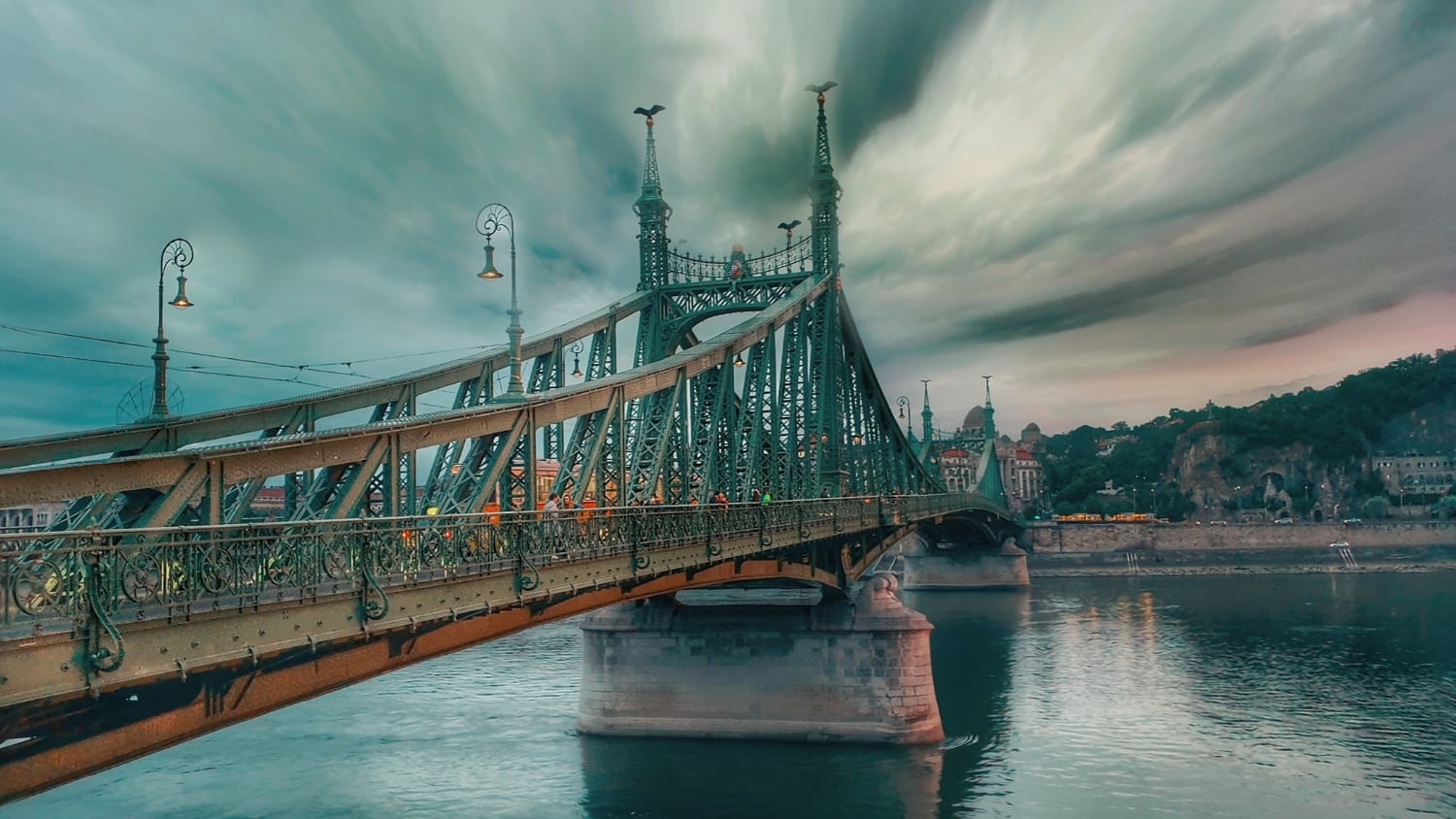
The irony of history
Constructed in 1896, on the day of its opening, the final silver rivet was inserted personally by the Emperor Franz Joseph. Not surprisingly, the Emperor gave his name to the bridge: Franz Joseph Bridge. However, World War 2 changed everything. First, the war led to the partial destruction of the bridge, and secondly, following its reconstruction, the new regime governing the country, with no hint of irony, gave the bridge its new name.
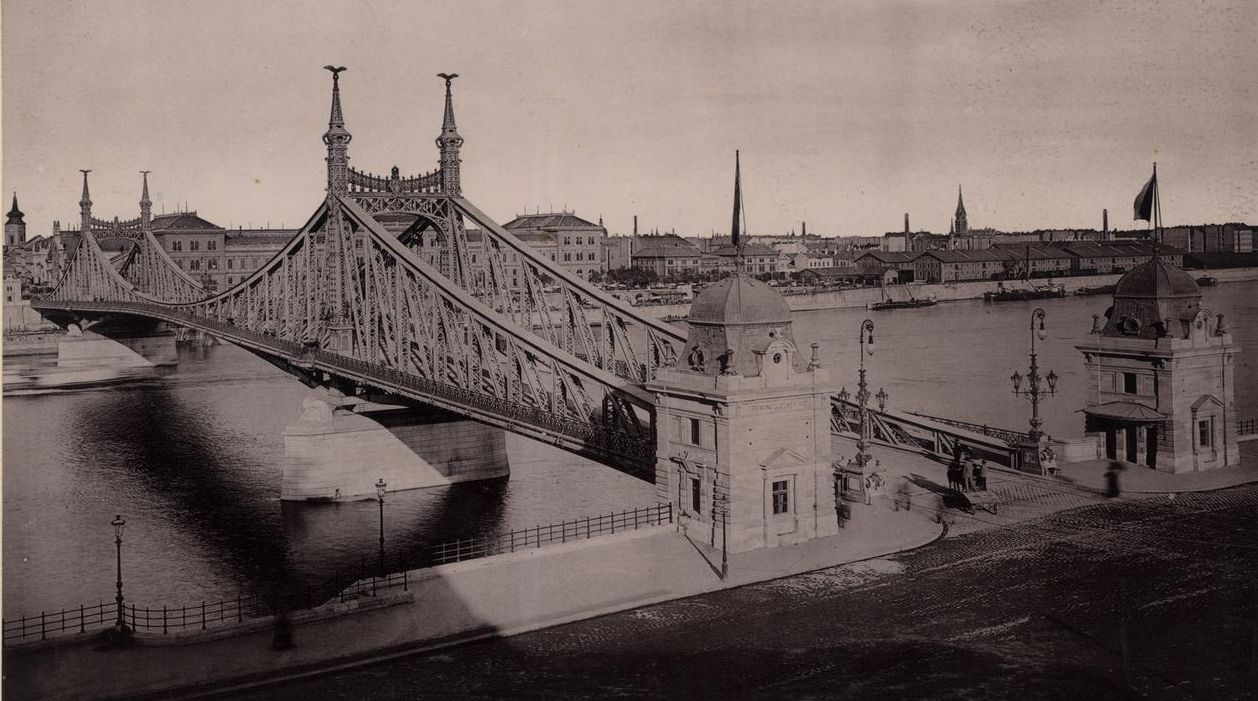
An individual bridge over the Danubendividual Bridge
But why is Liberty Bridge cherished by so many locals and visitors alike?
It’s unique. Beautifully lit-up at night, or seen in the daytime, the bridge has a distinct coating of green: its color being totally different to all of the other bridges of Budapest. This makes it impossible to confuse it with any other structure in the city. Although it was repainted grey after World War II, in the 1980s the decision was made to restore its original green color
Liberty Bridge is the shortest bridge in central Budapest, measuring 333.6 meters in length and 20.1 meters in width.
Ther is a unique statue on the bridge. Since 2021, a tiny Kolodko statue of Emperor Franz Joseph lounging in a hammock has sat by the north-side pylon of the bridge, tucked above the pedestrian walkway as a subtle nod to its original namesake.
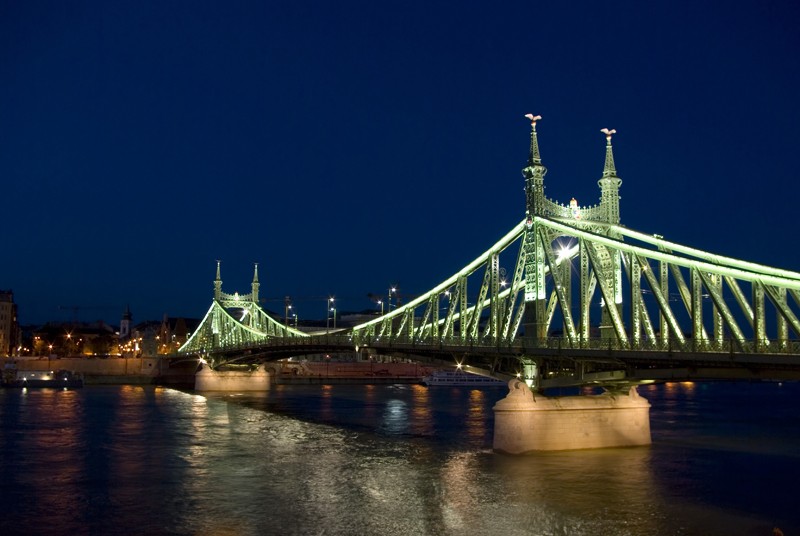
People friendly
There’s also something ‘intimate’ about Liberty Bridge. While on Erzsebet Bridge there’s just too much traffic, Liberty Bridge is quieter: it rumbles with some pretty yellow trams, and is easily accessed and enjoyed by pedestrians. And while Margit Bridge has its main structure beneath you, (often only visible from a boat), Liberty Bridge has its understated grandeur placed all around you. It’s adorned, at its highest points, with mythical Hungarian birds: the Turul birds that watch over everything. What’s more, Liberty Bridge is a more tactile bridge than most: because of its minute size, you can place your hands over its painted surface and you can feel the rivets.
In summer, the bridge is often closed to car traffic and turned into a lively space for pedestrians, picnics, and cultural events. It has even become a popular sunset-spot for locals, who bring blankets and enjoy the panoramic views over the Danube and Gellért Hill.
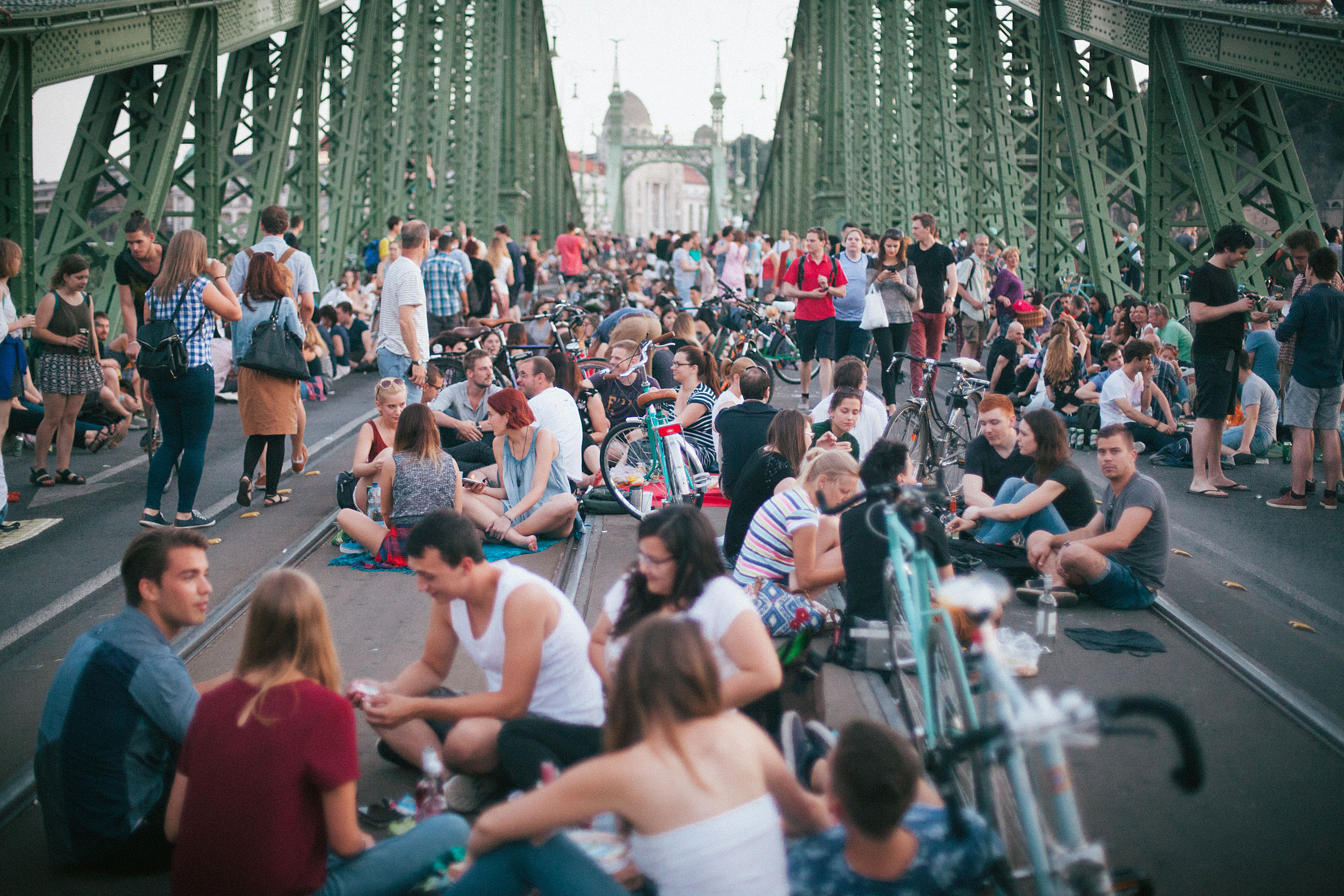
Liberty Bridge has a great location in Budapest
In addition to all of this, there is its location, which makes a stroll across the bridge memorable: on the Buda end of the bridge, there is the impressive Gellért square and the Gellért Hotel with its world-famous Thermal pool. These are all placed beneath the backdrop of Gellért Hill. On the Pest end of the bridge, there is elegant Váci Street (Váci utca) and also the Great Market Hall, where you can try Hungarian cuisine.
Why do people express a love for this bridge? Take a walk across and find out. You can also try the hop-on-hop-off sightseeing tours, where you can get to know many of Budapest’s sights. If you prefer walking, then explore the top 3 walks in Budapest.
Some other famous Bridges in Budapest: Margit híd (Margaret Bridge), Erzsébet híd (Elizabeth Bridge), Széchenyi Lánchíd (Széchenyi Chain Bridge Budapest).
The bridges of Budapest are marvelous. If you want to learn more about these amazing structures, read our article about the topic.
Chain bridge Budapest – the amazing construction that you have to visit if you are in the city!
FAQ
What is the history of the Liberty Bridge in Budapest?
The Liberty Bridge, originally named Ferenc József híd, was inaugurated in 1896 as part of the Millennium World Exhibition. It connects Buda and Pest across the Danube River and was designed by the engineer János Gárgyán. The bridge is notable for its unique green color and Art Nouveau design, making it an important landmark in Hungarian architecture.
How can I access the Liberty Bridge in Budapest?
The Liberty Bridge can be easily accessed by public transportation, including trams and buses that stop nearby. It is also within walking distance from several popular attractions in Budapest, such as Gellért Hill and the Great Market Hall. Pedestrians and cyclists frequently use the bridge, making it a vibrant part of the city’s transportation network.
Are there any notable features of the Liberty Bridge?
One of the most striking features of the Liberty Bridge is its green color, achieved through the use of copper. The bridge is adorned with decorative sculptures and lanterns, enhancing its aesthetic appeal. Additionally, it offers stunning views of the Danube River and the surrounding cityscape, making it a popular spot for both tourists and locals.
What activities can I enjoy near the Liberty Bridge?
Near the Liberty Bridge, visitors can explore Gellért Square, known for its beautiful gardens and the famous Gellért Hotel. The area also provides access to the Danube promenade, where you can enjoy leisurely walks or bike rides along the river. Additionally, the Great Market Hall, one of Budapest’s largest indoor markets, is just a short distance away, offering an authentic taste of Hungarian cuisine and culture.
